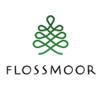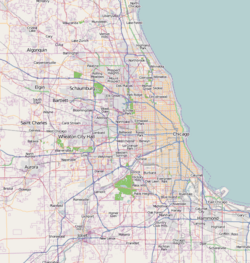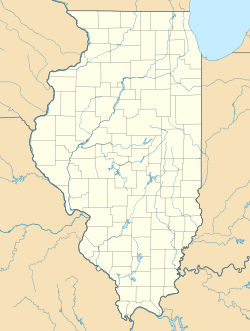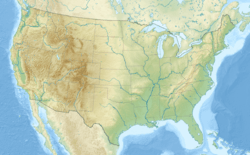Flossmoor, Illinois facts for kids
Quick facts for kids
Flossmoor, Illinois
|
||
|---|---|---|
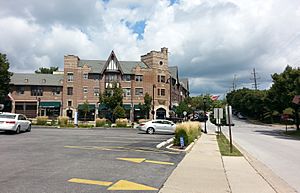
Downtown Flossmoor
|
||
|
||

Location of Flossmoor in Cook County, Illinois.
|
||
| Country | ||
| State | Illinois | |
| County | Cook | |
| Township | Rich, Bloom | |
| Incorporated | 1924 | |
| Government | ||
| • Type | Village | |
| Area | ||
| • Total | 3.66 sq mi (9.48 km2) | |
| • Land | 3.66 sq mi (9.48 km2) | |
| • Water | 0.00 sq mi (0.00 km2) 0% | |
| Population
(2020)
|
||
| • Total | 9,704 | |
| • Density | 2,650.64/sq mi (1,023.34/km2) | |
| ZIP code(s) |
60422
|
|
| Area code(s) | 708 | |
| Geocode | 26571 | |
| FIPS code | 17-26571 | |
Flossmoor is a village located in Cook County, Illinois, United States. It's about 24 miles south of downtown Chicago. In 2020, about 9,704 people lived there. Flossmoor is closely connected to its neighbor, Homewood, as they share a high school and a park district.
Contents
History of Flossmoor
Flossmoor started to grow in the 1800s. It became known as a fancy community in the 1920s. People knew it for its many country clubs and beautiful golf courses.
Big golf tournaments were held here, like the 1920 PGA Championship. Flossmoor officially became a village in 1924. Over the years, it became known as a top suburb in the south Chicago area. In the 1970s, many Jewish Americans and Italian Americans moved to Flossmoor. Today, most of the people living in Flossmoor are African American.
Geography and Location
Flossmoor covers about 3.66 square miles of land. It does not have any water areas. The village has a train station called Flossmoor station. This station is on the Metra Electric District line. It makes it easy for people to travel to downtown Chicago Loop and the University of Chicago.
Population Changes
The number of people living in Flossmoor has grown over the years. Here's a quick look at how the population has changed:
| Historical population | |||
|---|---|---|---|
| Census | Pop. | %± | |
| 1930 | 808 | — | |
| 1940 | 1,270 | 57.2% | |
| 1950 | 1,804 | 42.0% | |
| 1960 | 4,624 | 156.3% | |
| 1970 | 7,846 | 69.7% | |
| 1980 | 8,423 | 7.4% | |
| 1990 | 8,651 | 2.7% | |
| 2000 | 9,301 | 7.5% | |
| 2010 | 9,464 | 1.8% | |
| 2020 | 9,704 | 2.5% | |
| U.S. Decennial Census 2010 2020 |
|||
In 2020, there were 9,704 people living in Flossmoor. About 58.81% of the people were African American. Around 31.11% were White. Other groups included Asian and Native American people. About 4.76% of the population was Hispanic or Latino.
Many families live in Flossmoor. About 35.6% of households had children under 18. The average household had about 3 people. The median age in the village was 45.1 years old.
Education in Flossmoor
Students in Flossmoor attend schools in public school district 161. There are four elementary schools for grades K-5:
- Western Avenue
- Serena Hills
- Flossmoor Hills
- Heather Hill
After elementary school, students go to Mardell M. Parker Junior High School. This school serves students in grades 6–8.
Most students then go to Homewood-Flossmoor High School. This high school is part of School District #233. It has won the U.S. Department of Education's Blue Ribbon Award three times for being excellent.
Flossmoor also has a private Catholic school called Infant Jesus of Prague School (IJP). It teaches students from kindergarten to 8th grade. IJP has also won the Blue Ribbon Award twice.
Getting Around Flossmoor
The Flossmoor station offers Metra train service. These trains go north to Millennium station in Chicago. They also go south to University Park station. This makes it easy for people to travel for work or fun.
Famous People from Flossmoor
Many notable people have lived in Flossmoor, including:
- Nnedi Okorafor
- George Shultz
- Beryl Sprinkel
- Ed Derwinski
- George Stigler
- Buddy Guy
- John Dean
- Michael Beschloss
- Stephen Douglas Johnson
- George Nolfi
- Andy Tennant
- Xavier Fulton
- Brian Kerwin
- Philip Hart Cullom
- Jason Benetti
See also
 In Spanish: Flossmoor para niños
In Spanish: Flossmoor para niños


